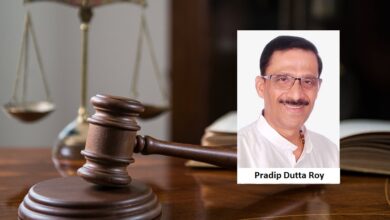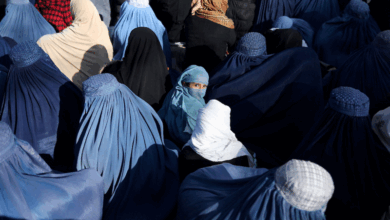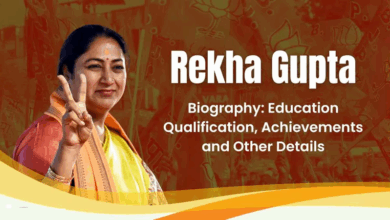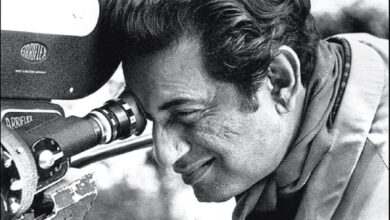Bose – Beyond the Battlefield
Remembering Subhas Chandra Bose and his contributions on his birthday
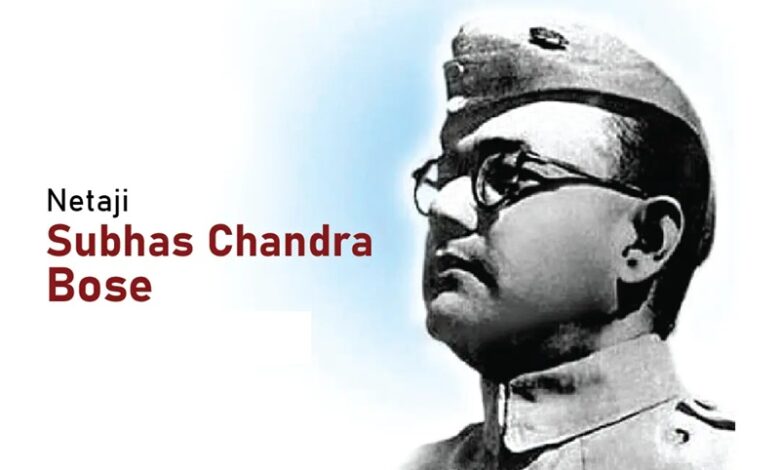
News Mania Desk / Piyal Chatterjee / 23rd January 2025
Subhas Chandra Bose, the most prominent liberation fighter, had remarkable leadership skills and was an engaging orator. He was known as Netaji. In 1943, he established the first Indian National Army (INA), Azad Hind Fauj, initiated an armed revolt, and inspired countless young Indians to engage in combat for liberation from British colonial rule.
“Jai Hind,” “Delhi Chalo,” and “tum mujhe khoon do, main tumhe aazadi dunga” are among his famous slogans. He is famous for his socialist policies and the forceful tactics he used to achieve independence. Numerous individuals consider Netaji as one of the greatest leaders to have ever existed. Subhas Chandra Bose remains linked to confident nationalism. Born on January 23, 1897, in Cuttack, Odisha, to Janakinath Bose and Prabhavati Devi, Netaji Subhas Chandra Bose gained notoriety with the slogan “Give me your blood, and I will give you freedom.” Janakinath Bose, a highly successful lawyer in Cuttack, was honored with the title “Rai Bahadur.” Subsequently, he became a member of the Bengal Legislative Council.
Netaji was an outstanding student who achieved second place in the matriculation examination. In 1916, he was dismissed from Presidency College in Calcutta (Kolkata) because of his nationalist involvement. In 1916, one of Subhas’s British teachers, E F Otten, was reportedly attacked and beaten. The professor made a racist comment directed at the Indian students. Subhas Chandra Bose was consequently expelled from the Presidency College and banished from Calcutta University. As a result of this event, Subhas was included among the Indian rebels. As a student, he was renowned for his passionate patriotism and was significantly influenced by the teachings of Swami Vivekananda. Vivekananda served as his spiritual mentor, whom he cherished as well.
To assist him in preparing for the Indian Civil Service (ICS) exam, his parents enrolled him at the University of Cambridge in England. He completed the ICS examination in 1920, but he quit his well-paying job upon hearing about the Jallianwalla Bagh massacre, returning to India in 1921 to aid the nation’s independence struggle. He quickly departed from his family to become a member of the Indian National Congress and engage actively in the campaign for the nation’s independence.
When he returned to India, he was impacted by Mahatma Gandhi. He became involved in the Non-Cooperation Movement, established by Mahatma Gandhi, which led to the formation of INC, a strong nonviolent organization. Mahatma Gandhi convinced him to work with Chittaranjan Das, who eventually became his political guide, during the movement. Chittaranjan Das focused on developing the nation’s policy, whereas Subhas Chandra Bose played a key role in educating the youth, workers, and students of Calcutta. He was eager to witness India transform into a federal, republican, and independent nation. Afterward, he served as a youth educator and was the Bengal Congress volunteer commandant. He established the Swaraj newspaper. In 1924, he was designated as the CEO of the Calcutta Municipal Corporation.
In 1925, Bose was incarcerated in Mandalay due to his nationalist endeavors. Following his release from prison in 1927, he was appointed to be the secretary of the Bengal State Congress and the president of the All India Youth Congress. In 1930, he was chosen as the Mayor of Calcutta. The Indian Struggle, authored by Bose, narrates the Indian independence movement spanning from 1920 to 1942. The book was prohibited by the British government.
Following his election as president of the Indian National Congress in 1938, he created a national planning council tasked with formulating an extensive industrialisation strategy. This, nonetheless, conflicted with Gandhian economic theory, which adhered to the concept of cottage industries and the benefits of utilizing local resources. Additionally, it seems that Bose and Gandhities fundamentally disagreed in their methods to policy and strategy while assessing India’s preparedness for the Civil Disobedience campaign and the supportive international context. Bose’s victory over a Gandhian opponent for reelection in 1939 served as his vindication. However, the “rebel president” felt compelled to step down due to Gandhi’s lack of endorsement. He opposed India’s enlistment as a British ally in the Second World War as well. “By freedom, I mean complete freedom, that is, freedom for the individual and society; freedom for the wealthy and the poor; freedom for men and women; freedom for all individuals and all classes,” he declared.
When he returned to India, he was impacted by Mahatma Gandhi. He became involved in the Non-Cooperation Movement, established by Mahatma Gandhi, which led to the formation of INC, a strong nonviolent organization. Mahatma Gandhi convinced him to work with Chittaranjan Das, who eventually became his political guide, during the movement. Chittaranjan Das focused on developing the nation’s policy, whereas Subhas Chandra Bose played a key role in educating the youth, workers, and students of Calcutta. He was eager to witness India transform into a federal, republican, and independent nation. Afterward, he served as a youth educator and was the Bengal Congress volunteer commandant. He established the Swaraj newspaper. In 1924, he was designated as the CEO of the Calcutta Municipal Corporation.
In 1925, Bose was incarcerated in Mandalay due to his nationalist endeavors. Following his release from prison in 1927, he was appointed to be the secretary of the Bengal State Congress and the president of the All India Youth Congress. In 1930, he was chosen as the Mayor of Calcutta. The Indian Struggle, authored by Bose, narrates the Indian independence movement spanning from 1920 to 1942. The book was prohibited by the British government.
Following his election as president of the Indian National Congress in 1938, he created a national planning council tasked with formulating an extensive industrialisation strategy. This, nonetheless, conflicted with Gandhian economic theory, which adhered to the concept of cottage industries and the benefits of utilizing local resources. Additionally, it seems that Bose and Gandhities fundamentally disagreed in their methods to policy and strategy while assessing India’s preparedness for the Civil Disobedience campaign and the supportive international context. Subhas Chandra Bose referred to Mahatma Gandhi as the father of the country during his radio broadcast, during which he launched attacks on the British army. “Father of our Nation!” declared Subhas Chandra Bose in his final radio broadcast from Burma in 1944.
The formation and activities of the Azad Hind Fauj, widely recognized as the Indian National Army, or INA, during World War II, represented a crucial milestone in the struggle for independence. Rash Behari Bose, an Indian revolutionary who escaped from India and spent many years in Japan, established the Indian Independence League with assistance from Indians living in Southeast Asia. Aiming to liberate India from British rule, the league formed the Indian National Army from Indian prisoners of war following Japan’s defeat of the British army and its capture of almost all the nations in Southeast Asia. This military force was largely assembled by General Mohan Singh, a British Indian army officer. Due to Subhas Chandra’s resistance against British authority, the British temporarily confined him to house arrest. However, in 1941, he escaped the country secretly. The authorities took a few days to realize that he was absent from his barrack, the place where he held under protection.
He traveled by train, car, and on foot until he reappeared in Afghanistan’s capital, Kabul, before disappearing again. His German radio show in November 1941 excited the Indian populace and caused upheaval within the British establishment, making them aware of their leader’s significant strategy to liberate their nation. It also fostered a sense of renewed confidence in the Indian rebels who were facing the British on various fronts.
When he traveled to Japan in 1943, the royal government granted his request for help. In this context, he rebuilds the Indian National Army (Azad Hind Fauj) to transform it into a powerful instrument for India’s freedom. Approximately 45,000 troops were involved in the Azad Hind Fauj, which comprised Indians held in various Southeast Asian nations and captured soldiers. In October 1943, he set up a provisional government that was recognized by the Axis Powers during the Second World War. Once INA freed the Andaman and Nicobar islands from British control in December 1943, they were renamed Shaheed and Swaraj islands.
The objective of Subhas Chandra Bose was India’s freedom from the Eastern Front. The Brigades of Gandhi, Azad, and Subhas were formed. At the Indian Border, INA captured Coxtown following their march through Burma. Now that they were in India, they were resolute about driving out the British! The rallying call was Delhi Chalo, meaning “Let’s head to Delhi.” The soldiers who invaded India, as stated by a key leader of the Azad Hind Fauj, Shah Nawaz Khan, prostrated themselves on the earth and fervently kissed the sacred soil of their homeland.
Despite efforts, the Azad Hind Fauj’s attempt to liberate India did not succeed. However, Bose was never someone to back down. He attempted to flee and begin battling anew. He never exited Taihoku Airport, where he escaped on a flight. It is said that his plane crashed close to Formosa, currently known as Taiwan. He reportedly suffered third-degree burns, fell into a coma, and never regained consciousness. The body of Netaji Subhas Chandra Bose was never located, even though many believe he died in an airplane accident. Various theories have been suggested regarding his disappearance.
The Indian government formed multiple committees to investigate the issue and ascertain the facts. As per the results of the Shah Nawaz Committee (1956) and the Figgess Report (1946), Bose died in the airplane crash in Taiwan. The previous findings were additionally backed by the Khosla Commission (1970). On May 17, 2006, the reports of the Justice Mukherjee Commission were introduced in Parliament, asserting that “Bose did not perish in the plane crash and the ashes at Renkoji temple are not his.” The Indian government, however, disagreed with the findings.
Subhas Chandra Bose was one of India’s most prominent freedom fighters. Subhas Chandra Bose will forever be recognized as a key personality in the history of India’s struggle for liberation from British rule. From the start, Bose, a proactive individual, opted to create his own path to India’s independence, fully recognizing the challenges ahead. In 1943, he revitalized the Indian National Army, known as “Azad Hind Fauj,” originally established by Rash Behari Bose in 1942. Although short-lived, the INA’s assault played a crucial part in the British choice to cease activities and eventually retreat to their own land. In the end, this did create an opportunity.
“We have a grim fight ahead of us because the enemy is powerful, unscrupulous, and ruthless,” Subhas Chandra Bose told the Army. You will have to endure death, starvation, forced marches, and privation on this last march to freedom. You won’t be free until you pass this test. The Indian National Army (INA) engaged in numerous battles to establish independence for the Indian dominion. Only Subhas Chandra Bose’s extraordinary intelligence made all of this possible.
He promoted pragmatic economic strategies and set a precedent through his actions. It is also essential to remember that he was the individual who encouraged Indian women to play a prominent role in the struggle for India’s independence. The Azad Hind Fauj formed a women’s division led by Captain Lakshmi Swaminathan. The battalion was recognized as the Rani Jhansi. Azad Hind Fauj evolved into the citizens of India symbolizing courage and unity. Bose’s intense remarks motivated the troops. “Donate your blood, and I will grant you freedom” is his famous quote.
Moreover, Subhas was a remarkable adventurer. His bravery, unmatched love for the nation, and military accomplishments have raised him to the level of an inspiration for the youth of India. He remains a symbol of hope and inspiration, living on solely in our hearts and minds. Alongside other prominent figures of his time such as Jawaharlal Nehru and Mahatma Gandhi, he played a vital role in freeing the nation from two centuries of British rule. From 1920 to 1941, he was incarcerated eleven times. Even at the moment of his passing, he was making plans to relocate to Russia and discover a new method to combat the British. He persisted in battling the British until the final moments of his life as a dedicated freedom fighter, and it is this determination and love for his country that deserves the utmost respect.
Each year on January 23, numerous regions of the nation honor Subhas Chandra Bose’s birthday to commemorate his role in India’s struggle for independence.



